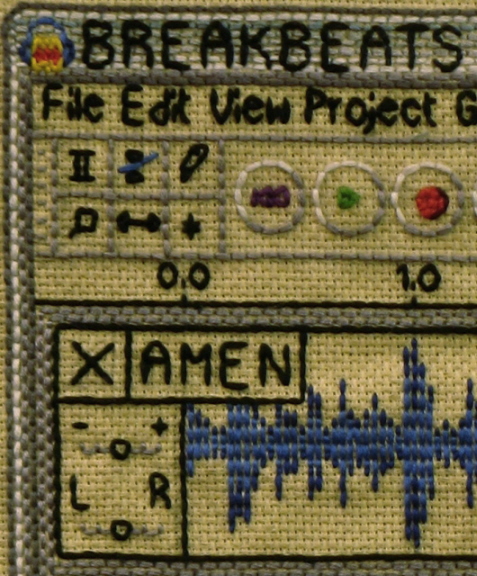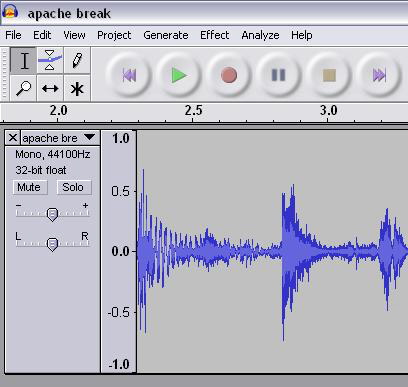Breakbeats Sampler

Here is a needlework sampler I’ve made based on the tradition of needlework samplers and the processes used by producers to create contemporary musical compositions.
For those who might not be familiar with what a needlework sampler is, here is the definition from Wikipedia: A (needlework) sampler is a piece of embroidery produced as a demonstration or test of skill in needlework. It often includes the alphabet, figures, motifs, decorative borders and sometimes the name of the person who embroidered it and the date. The word sampler is derived from the Latin ‘exemplum’ – an example.
And here’s how Wikipedia says needlework samplers originated: The oldest surviving samplers were constructed in the 15th and 16th centuries. As there were no pre-printed patterns available for needleworkers, a stitched model was needed. Whenever a needlewoman saw a new and interesting example of a stitching pattern, she would quickly sew a small sample of it onto a piece of cloth – her ‘sampler’. The patterns were sewn randomly onto the fabric as a reference for future use, and the woman would collect extra stitches and patterns throughout her lifetime.

It occurred to me that needleworkers used to have to make patterns and images to decorate fabric in the same way that contemporary music producers make beats and musical compositions by repeating and layering audio samples in digital sound editing programs. So the files created using digital editing programs today basically function in the same way that needlework samplers did in the days when all embroidery had to be done by hand.

For those who might not be familiar with breakbeats, here is the definition from Wikipedia: Breakbeat (sometimes breakbeats or breaks) is a term used to describe a collection of sub-genres of electronic music, usually characterized by the use of a non-straightened 4/4 drum pattern (as opposed to the steady beat of house or trance). These rhythms may be characterised by their intensive use of syncopation and polyrhythms.
The audio samples I used in this piece are the four most famous breakbeats mentioned on theWikipedia page: The Amen Break, a drum break from The Winstons’ song “Amen, Brother” is widely regarded as the most used break ever. This break was first used on “King of the Beats” by Mantronix, and has since been used in thousands of songs. Other popular breaks are from James Brown’s “Funky Drummer” and “Give it Up or Turnit a Loose”, The Incredible Bongo Band’s “Apache”, and Lyn Collins’ “Think (About It)”.
Here’s a video featuring some of these breakbeats:
and here’s a link to the original song featuring: The Apache Break
I recorded and edited most of the samples I used in this piece myself using a sound editing program called Audacity, one of the most popular free digital sound editing programs.
For more information about breakbeats and the famous “Amen Break,” artist Nate Harrison made an amazing video about it back in 2004: